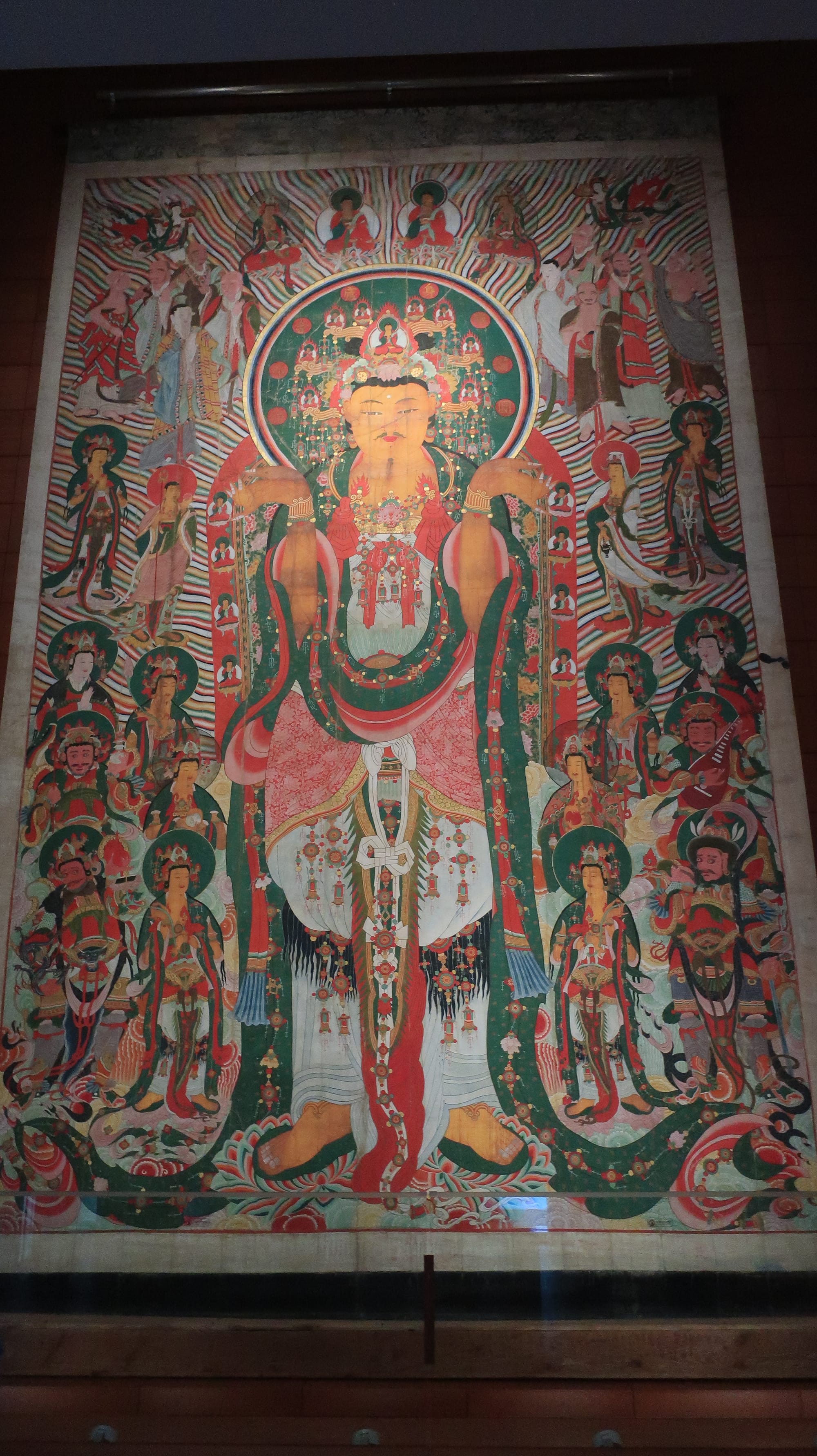National Museum of Korea
I’m not an expert in Religion or History, but I found two subjects fascinating. Firstly, the Korean Maps of the 14th and 18th centuries were fascinating in terms of their symbolic abstraction and accuracy. I will probably write more about those maps in a later article, but today, I would like to write about a Buddhist painting that I found in the National Museum of Korea.
The National Museum of Korea was established in 1945 and is a major flagship for the history and art museum in South Korea. This place developed various research, archives, and education programs from historical human artefacts and artworks in Korea and Asia, including China, Japan, the South, and the Middle East, which shows a correlated history of Eastern culture and art.

the Buddhism collection evidence alteration and mutation through the cultural understanding of an idea, which shows how one major religion in human history has spread all over Asian culture. It might worth researching more how symbolic imageries and icons changed in different cultures and countries.
One giant painting in the National Museum was a large scroll painting, ‘Scroll Painting at Sin-Wonsa’, in 1664. This painting is almost 10m in height and 6.5 m in width for the purpose of hanging outside of a Buddhist temple called Sin-Wonsa to spread the speech of Buddhism. In the middle, Vairocana, with glorious and florid accessories, still seems to be in the practice of asceticism, showing the depiction of the Buddhist world with majestic lights and colours in the 17th century. Furthermore, each person surrounding Vairocana represents different Bodhisattva (saints) and pupils with iconic figures.

I can’t help but think of Christian paintings, which also have a circular figure that is the light around a saint or angel’s head with dazzling colours to connote how ‘saint’ this figure is. Although the Korean dictionary says this circle or nimbus might have started in the 1st century in Buddhism and the 2nd century for Jesus and angels because it has a long history, it is hard to figure out when or where this figure started and how it began to represent power or saintliness. (or maybe there is already an article about it) Further relation might be the size of the figures. As Vairocana is the most important figure in this painting, his or her size is bigger than the others, the size of the figure indicates the weight or importance than distance in a three-dimensional sense. Therefore, it also might be possible to think that it is a ‘closed-up’ figure in the cinematic sense.
In Western, especially French, theories, the technique of ‘close up’ is related to facial expression, ‘[T]he close-up is the technical precondition for the art of facial expression and hence of the higher art of film in general.’ (Balazs, 2010, p. 37) Deleuze once wrote that close-up scenes cut up human faces on the screen and create a map of expression. Mary Ann Doane also recites Deleuze and notes
‘Gilles Deleuze, citing Béla Balázs, claims that “the close-up does not tear away its object from a set of which it would form part, of which it would be a part, but on the contrary it abstracts it from all spatio-temporal co-ordinates, that is to say it raises it to the state of Entity” (95–96). Of all the different types of shots, it is the close-up that is most fully associated with the screen as surface, with the annihilation of a sense of depth and its corresponding rules of perspectival realism. The image becomes, once more, an image rather than a threshold onto a world. Or rather, the world is reduced to this face, this object.’(Doane, 2003, p. 91)
Doane further cited Eisenstein, who stated that French, Russian, and English understandings of close-up differ through their varying nomenclature in different languages and terms of spatial qualities. For instance, ‘[i]n Russian and in French, the term for close-up denotes largeness or large scale (e.g., gros plan in French); while in English, it is nearness or proximity that is at stake.’ (Doane, 2003, p. 92) In this sense, the French understanding of cinematic close-ups is closely related to Buddhist paintings and their figural size in the scrolls.
I already uploaded her article in the previous post, but for more critical analysis about the close-up and the frame, Rosalind E. Krauss’s Close-up: Frame by Frame and Eisenstein’s and Deleuze’s close-up should be analysed, as well as the close-up in Ancient paintings.
References
Deleuze, Gilles. Cinema 1: The Movement-Image. Trans. Hugh Tomlinson and Barbara Habberjam. Minneapolis: University of Minnesota, 1986.
Doane, Mary Ann The Close-Up: Scale and Detail in the Cinema_. Differences, (2003) 14 (3): 89–111. doi: https://doi.org/10.1215/10407391-14-3-89

